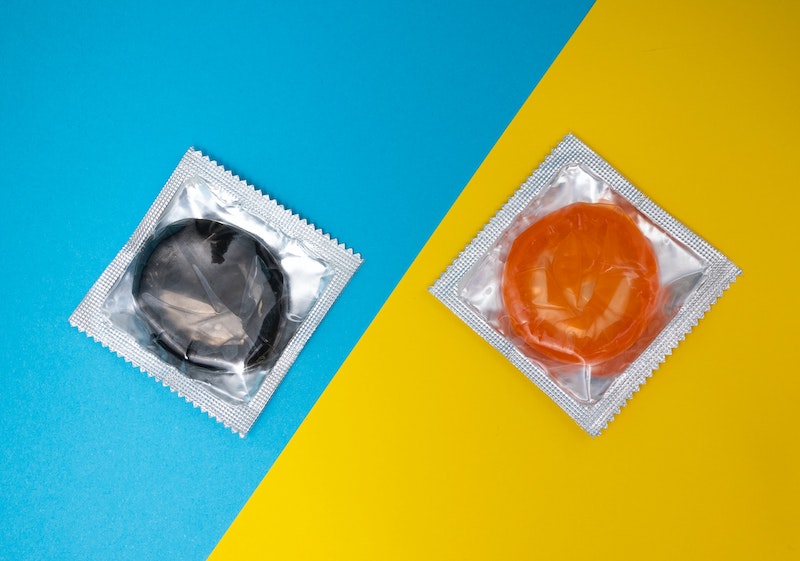Real men gets tested
- What you should know about sexually transmitted infections
Over the past few years we have seen a decrease in new HIV infections but the rates of other STIs are on the rise. This might be due to the fact that more and more South Africans are practicing unsafe sex. According to data from the Human Science Research Council (HSRC) the use of condoms has decreased, with close to 50% of sexually active individuals reporting condomless sex during their last sexual encounter. People are under the impression that you will know if you have a STI and that you don’t have to use condoms since STIs are curable. But this is not entirely true. Here are some scary facts to consider:
- You can have a STI without knowing it and still pass it on to someone else
- Not all STIs are curable
- You can get any STI with only one unprotected sexual encounter
- Having a STI significantly increases your chance of contracting HIV
So what is a STI?
A sexually transmitted infection is an infection that is spread during any sexual activity be it intercourse, anal sex or oral sex. It can also occur using fingers, other body parts, or sex toys that have come in contact with another person’s genitals or body fluids.
What are the different types of STIs?
One can classify STIs according to the type of organism. We get viral infections, bacterial infections and other;
Viral infections
The problem with a viral infection is that there is no cure, meaning that it will most likely be with you for a very very long time, in some cases life long.
- HIV
HIV has been making headlines since its discovery in the 1980’s. A few weeks after contracting the virus one might experience flu-like symptoms followed by an asymptomatic period. During this time you won’t suspect you or your partner of having HIV. That is why it is important to do yearly HIV testing.
- Herpes Simplex Virus
Both the type 1 and type 2 herpes virus can cause genital herpes. Herpes typically causes genital blisters followed by ulcers. But more than half of cases present in an atypical way and can even be asymptomatic. You can transmit the virus even if you don’t have any symptoms, this is called asymptomatic shedding. We don’t have a cure for herpes, but one can manage it with antiviral medication.
- Human papillomavirus (HPV)
Up to 80% of individuals will be infected with HPV at some point in their lives. Not everyone with the virus will show symptoms, but should your immune system fail to contain the virus you might develop genital warts or females can develop an abnormal pap smear. Both men and women can be affected by the virus. Certain types of the virus can result in cancers such as cervical cancer, penile or throat cancer.
- Hepatitis virus
There are three different kinds of hepatitis, some of which are spread more easily than others. Hepatitis A, B and C can all be transmitted sexually, however hepatitis B is the type most likely to be sexually transmitted. All types of hepatitis are serious and affect the liver. Hepatitis B and C are the leading cause of liver cancer and are the most common reason for liver transplants.
Bacterial infections
Most bacterial infections can successfully be treated with the right antibiotics. The concern is that you can have an infection without knowing it, and these infections can have devastating outcomes if left untreated.
- Gonorrhoea
Gonorrhoea is caused by the bacteria Neisseria gonorrhoeae. Anyone who has any type of sex can catch gonorrhea. The infection can be spread by contact with the mouth, vagina, penis, or anus. Symptoms involve a green or yellow discharge from the penis (that is where the name “the drop” comes from), pain when passing urine. Gonorrhoea can sometimes cause inflammation of the prostate gland and testicles.
- Chlamydia
Chlamydia is caused by the bacteria Chlamydia Trachomatis. It is the most commonly sexually transmitted. About 50% of men with chlamydia have no symptoms. But if you develop symptoms you might see a penile discharge or experience a burning sensation when urinating.
- Syphilis
Syphilis has been called ‘the great imitator’ because so many of the signs and symptoms are indistinguishable from those of other diseases. Syphilis develops in stages and symptoms vary with each stage. The first stage involves a painless sore on the genitals, rectum or mouth. After the initial sore heals, the second stage is characterised by a rash. Then, there are no symptoms until the final stage which may occur years later. This final stage can result in damage to the brain, nerves, eyes or heart.
Other
Trichomoniasis is an infection caused by a parasite. It can affect both men and women resulting in a penile or vaginal discharge. It can be treated with antibiotics. “Crabs” are a form of lice that live on the hair in the genital area and occasionally on other coarse-haired areas of the body, such as the armpits or the eyebrows. They are usually spread by sexual contact, although they also can occasionally be transmitted by infested linens and clothing.
Symptoms include itching in the genital area and visible lice or eggs. Scabies is a contagious skin disease that is not always sexually transmitted. Caused by the parasite Sarcoptes scabei, scabies causes an extremely itchy rash that gets worse at night. The rash is most often found in folds of skin, such as between the fingers, on the wrists and ankles, and in the genital area. Scabies is incredibly contagious, and the mite can live for days off the human body.
When should you get tested for STIs?
According to South African guidelines STI screening should be done at every visit to a health facility for people aged 15 to 49 years of age regardless of symptoms. The screening involves three questions.
If you answer yes to one of the following questions you definitely have to get tested
- Do you have any genital discharge?
- Do you have any genital ulcers?
- Has/have your partner(s) been treated for an STI in the last 8 weeks?
But let’s keep it simple. If you are sexually active you should get baseline STI tests done. The type of sex you have and the number of partners you have will determine the freqeuncy of testing. For instance, men who have sex with men sould get yearly STI tests because of the higher risk of contracting STIs through anal sex.
How can I protect myself?
Although abstinence would be the most effective way to prevent STIs it is not feasible or realistic. There are however many ways by which you can reduce your risk of getting an STI:
- Know your sexual partners and limit their number – Your partner’s sexual history is as important as your own. The more partners you or your partners have, the higher your risk of getting an STI.
- Use a latex condom – Using a condom every time you have vaginal, oral, or anal sex decreases the chances of infection. Condoms lubricated with spermicides do not offer extra protection. Frequent use of some spermicides can actually increase the risk of HIV.
- Use a dental dam during oral sex
- Get immunised – Vaccinations are available that will help prevent hepatitis B and some types of HPV
Having an STI is definitely not the end of the world. Most STIs can be cured and for those infections that can’t be cured can be managed. Yes, getting diangosed with a sexually transmitted infection is not fun. While we seem to be living in an increasingly sex-positive society, STIs are still stigmatise. Stop judging yourself and judging others. If you are having sex you put yourself at risk of certain infections. Sex is normal, sex should be fun, sex should be free of discrimination but sex should also be safe. Be safe and get tested.
Written by Dr Jireh Serfontein
Medical doctor and sexologist
Head of MySexualHealth Pretoria

